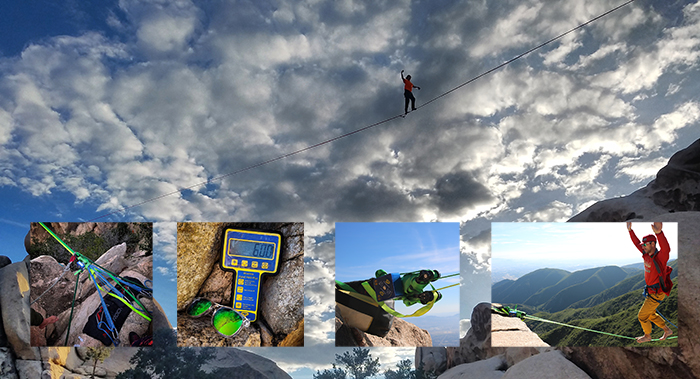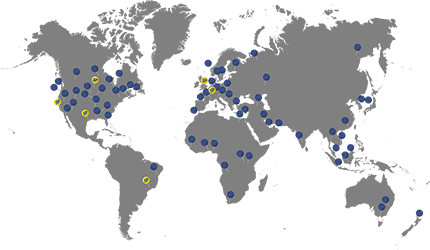Slack Liners Employ Load Cells to Measure Line Tension

Thrill seekers who participate in an extreme sport called slack line, have employed Straightpoint wireless load shackles and other load cells to measure the tension on lines before stepping onto them, sometimes hundreds of feet in the air.In its simplest sense, slack line is different to tight rope walking in that the line has slack in it. When in use there is an appreciable dip in the line between the anchor points where the person is walking. Slack liners use force measurement equipment to record a standing tension when the line is tightened and measure leash falls.
David Kingston, a physical therapist by day, has been slack lining for 16 years and is a long-time user of dynamometers. However, he has only recently embraced wireless load shackles which, ironically, are more typically suited to low headroom applications in the industrial sector.
Kingston said: “We walk on 1-in.-wide flat webbing made of different materials, usually nylon or polyester. Tight rope walkers tend to have their lines much tighter and also have guy wires that keep the line from swinging at certain intervals across the line. With slack lines there tends to be more movement. When we take the slack line up, we call it high lining.”
The highest line Kingston has walked was at Taft Point, in Yosemite, California, where he crossed 170 ft. at a height of 3,200 ft. The longest high line he has walked is 250 ft., but he has walked many lines ranging from 40 ft. to 330 ft and his longest low line crossing without a harness is 666 ft.
Lines are anchored across canyons and rocks on bolts or natural features. Kingston explained that if four glue-in eye bolts are on one side of a canyon, he builds an anchor to equalize them and share the load. Each bolt is also backed up to the master point individually so if one bolt breaks the master point would not extend or change position. Slack liners walk on a single piece of webbing that is taped to a backup line. Kingston uses two forged titanium 22,000-lb. rings that follow as he walks and attach him to a harness with a leash.
He said: “Walking the lines is the safest part of the day because once it is set up you are actually tied in. Sometimes during the set up, scrambling to the tops of the rocks, that isn’t always the case. Some of the hikes and climbs to the tops are definitely more dangerous than the sport itself.”
Slack liners are increasingly utilizing Straightpoint force measurement technology with its Wireless Handheld plus units. Kingston said: “The wireless option is beneficial since I normally tighten my lines on the opposite side of the gap to where the load cell or load shackle is rigged. We usually walk lines with anywhere from 500 lbs. to 1,000 lbs. standing tension. Using Straightpoint equipment I can create a graph and actually see data related to peak loads.”
He added: “I really enjoy the rigging process. I am known for my safe and strong rigging techniques in the slack line community. It’s great to have a dynamometer in the system that adds length to an anchor so we don’t have to jump when we walk off the line. The ends of the lines are the most dangerous because if you fall you have to catch the line, as ending up on your leash can swing you into the rocks.”
Kingston concluded: “I enjoy walking on the slack lines and high lines because of the mindset that one has to adopt. You have to be completely focused on the task at hand. All your thoughts about daily life disappear and at the same time you become hyper aware of your surroundings and body. You can feel yourself moving at light speed and be motionless at the same time when you need to be.”



